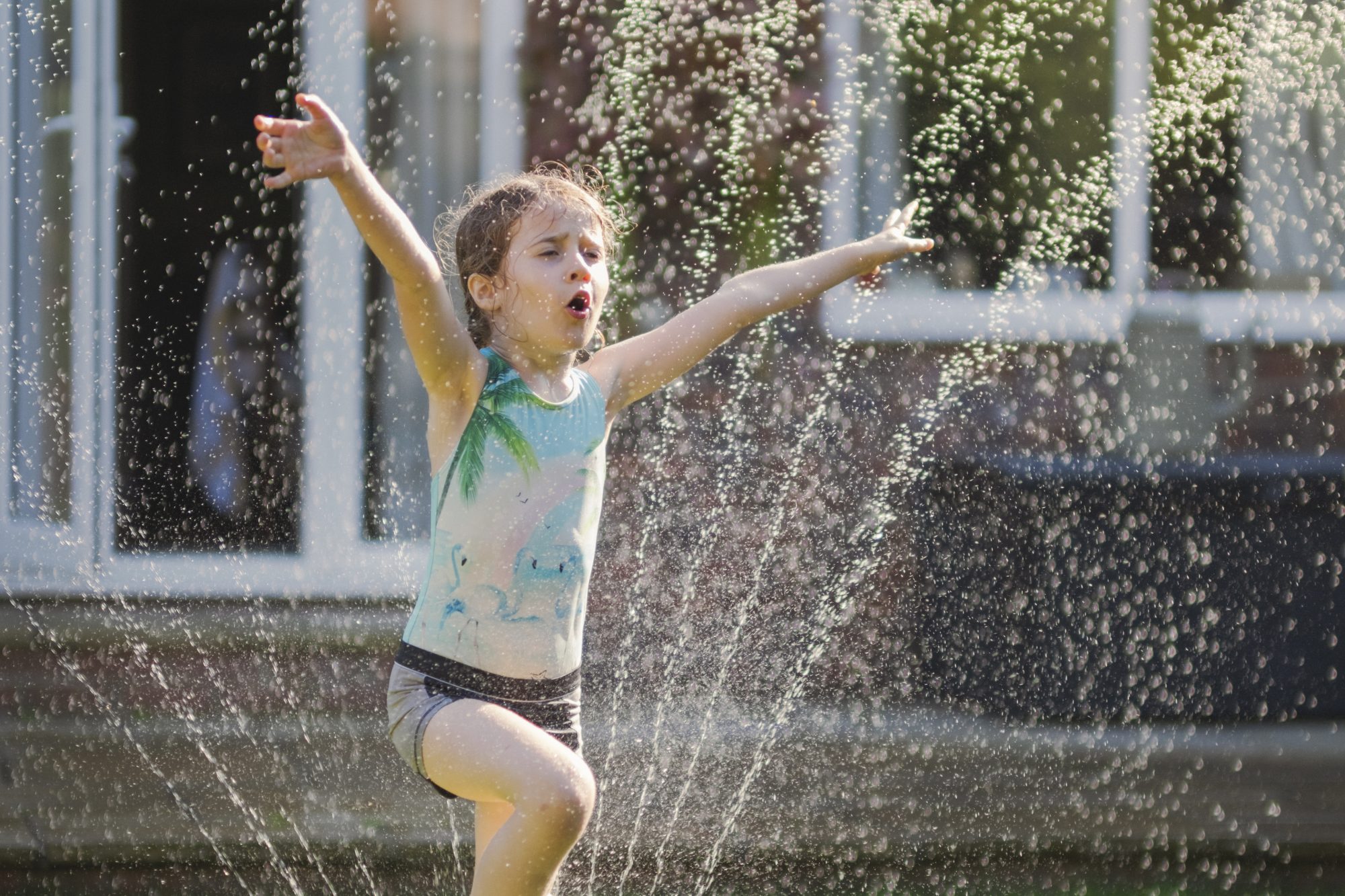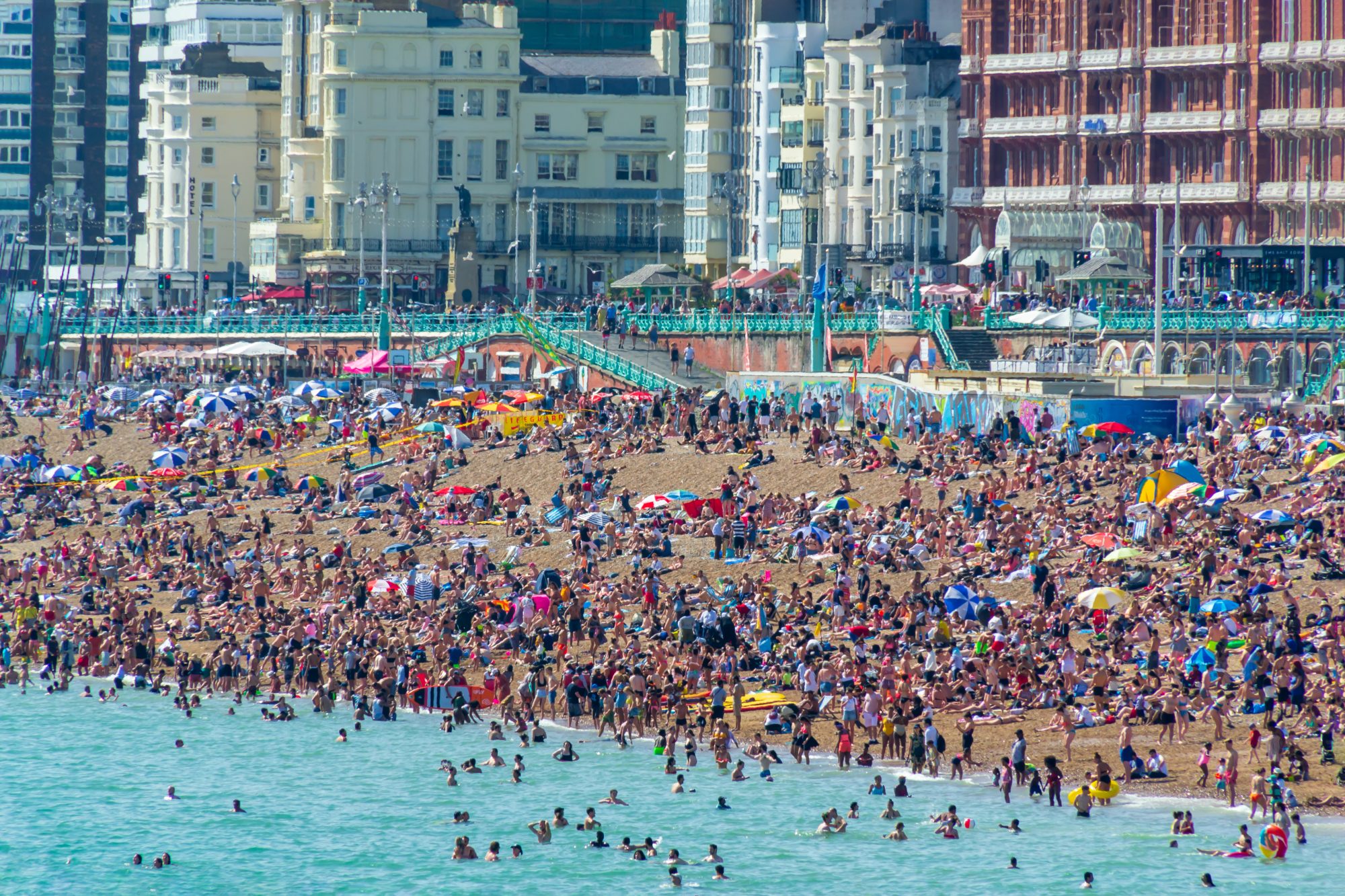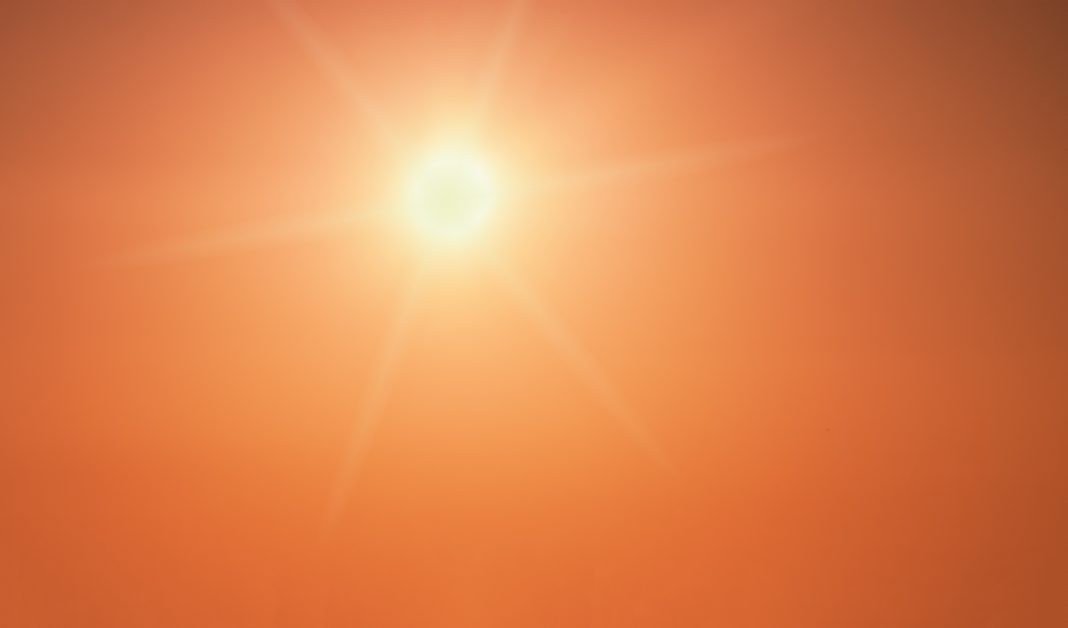As the temperatures continue to rise, we all need to be aware of the dangers of the sun and how to keep safe in hot weather, especially for those who are vulnerable
Humans have a problem in the summer months. Between May to October, hotter temperatures, longer days and stronger sunlight with an increase in UV radiation pose risks to our health.
- What are the health dangers of hot summer temperatures?
- How can we protect ourselves in the summer and stay well?
Health risks of hot summer temperatures
We only need 15 minutes of sunlight a day to make vitamin D in the skin – 30 minutes for darker skin – and beyond that, sun exposure has no additional medical benefits.
UV and skin cancer
Greater exposure to ultraviolet radiation (UVA and UVB) increases the risk of skin cancer, and causes skin ageing. Both UVA and UVB damage DNA in skin cells, resulting in genetic mutations which cause skin cancer, such as melanoma, and also basal cell and squamous cell cancers. UV light can also cause cataracts, macular degeneration and eyelid tumours.
Sunburn is a major risk factor for melanoma. If you get sunburnt just once every 2 years, this triples your risk of being diagnosed with melanoma.
Heat, heat exhaustion and heat stroke
The body needs to be kept at a constant temperature for correct physiological and metabolic functions.
High temperatures lead to heat exhaustion, heat stroke and premature death, notably in the elderly. When the body overheats, it also increases the risk of other medical conditions.
2,800 people aged 65 and over, died in the UK in the 2022 heatwave.
Increased death from heat – UK statistics
- 2,800 people aged 65 and over, died in the UK in the 2022 heatwave. These were the excess deaths, over and above what would have been expected in an average year.
- The leading cause of death was Alzheimer’s and dementia, probably because these conditions are seen in older people who are more at risk from extreme heat.
- Cardiac arrhythmias were also seen to increase, showing a 17.4% increase during the hot weather. A rise in temperature puts the heart under additional strain, and many older people are already suffering from chronic heart and respiratory conditions. (ONS)
- Heart attack risk increases by 5% for each 9 degrees Fahrenheit of temperature increase.
- Stroke is more common in the summer too. In one study, 62.4% of strokes occurred in the summer as compared to 37.8% in the winter.
- In prolonged exposure to higher temperatures, the blood becomes hypercoagulable, increasing the risk of thrombosis (clots). This is exacerbated by dehydration due to sweating and not drinking enough water.

Who is most at risk from the heat?
Those most at risk from increased heat are people aged 65 and over, but especially the elderly, and babies. This is because older people have reduced thirst sensation and need to be reminded and encouraged to drink.
They also sweat less proficiently than younger people – sweating is vital as it is the body’s predominant self-cooling mechanism. Babies produce a lot of heat as they are very physically active, and also sweat less efficiently than adults.
What are heat exhaustion and heat stroke?
Heat exhaustion occurs because the body has lost too much fluid from being too hot for too long. If unresolved, this can then progress to full-blown heat stroke.
This is a dangerous situation because it means the body has failed to control its core body temperature, which has begun to rise above 104 degrees Fahrenheit (40 degrees Celsius). Heat stroke can be fatal – up to 65% of those affected will die from the condition.
Notice symptoms of heat exhaustion? Here’s what to do
If you notice anyone has developed symptoms of heat exhaustion, act immediately and get them out of the sun. Take them indoors, where they need to lie down in a cool, dark place. Loosen any tight clothing, and get them to drink plenty of cool water.
Apply a cold compress to their forehead. This is not an indication for paracetamol or ibuprofen. If symptoms have not improved within 30 minutes, call 999.
The symptoms of heat exhaustion include dizziness, headache, nausea, vomiting, sweating, a rapid pulse rate, feeling thirsty, and not passing urine.
If this develops into heatstroke, this means having any of the above symptoms but in addition symptoms such as confusion, drowsiness, unresponsiveness or being unconscious.
If the person has symptoms or signs of heat stroke – phone 999 immediately.
It’s imperative in the summer, to be proactive and take steps to keep cool before symptoms of heat exhaustion or heatstroke appear.
How to stay safe in hot weather this summer
- Think ahead –
- Plan your time outside. The hottest part of the day is between 11 am and 3 pm. Take sensible precautions if you have to go outside between these times. Perhaps you could arrange your activity for later in the day/early evening.
- Sunscreen –
- Apply sunscreen 20 minutes before going outside in the sun. Make sure all sun-exposed skin is covered. Use a suncream with at least an SFP-30 and 4 out of 5 stars anti-UVA protection. Reapply every 2 hours, after swimming, or if sweating excessively. Use suncream even on cloudy days as 80% of UV still reaches your skin. Avoid suntanning oil which concentrates UV and increases the risk of sunburn.
- Limit time in the sun –
- Don’t spend too long in the direct sun. Sit in the shade, wear a wide-brimmed hat, and proper sunglasses with UV filters that meet CE standards. If you are walking in the sun, cover your arms and legs, and wear pale-coloured, loose-fitting clothing.
- Keep well hydrated –
- Drink at least 3 litres of water a day on hot days as you sweat more. Water from tea and coffee counts towards this. However, it’s advisable not to drink caffeine in hot temperatures. Also, to minimise or avoid alcohol. In the heat, the intoxicating effects of alcohol occur more quickly and then affect decision-making, reduce reaction times and increase the risk of falls and accidents.
- Keep cool –
- If you feel you are overheating, go inside out of the sun and find a cool quiet place to lie down. Keep windows and doors shut in the daytime and blinds and curtains drawn. These can be opened at night when the air is cooler. Have cool showers and baths. Drink iced drinks. Put a cold compress on your forehead. Sit in front of a fan placed near a bowl of iced water. If it’s possible, it may be better to sleep downstairs on hot nights, as hot air rises, and the top of the house will be hotter than the ground floor.
- Take special care of older adults and babies –
- They need a very proactive approach to keep their fluid intake up and help to keep cool. Act swiftly if they show any signs of heat exhaustion or heat stroke.

Final thoughts on staying safe in hot weather
In the UK, climate change is causing longer summers with increasing numbers of hot spells. The Met Office has reported that the 10 hottest years since the 1870s have occurred since 2002. In the past 30 years, the UK has heated up 0.9 degrees C. This trend is sadly likely to continue.
There’s no doubt we need to learn to live with the heat and stay safe. Let’s not underestimate the dangers of living in hot weather.
- What could you do differently this summer to protect yourself and your family?
For more information
- NHS – Sunscreen and sun safety
- British Association of Dermatologists – The Sunscreen Factsheet
This pice was written and provided by Dr Deborah Lee, Dr Fox Online Pharmacy











